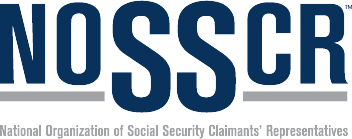Workers' Compensation for Sports and Fitness Industry Workers
With the thrill of the game and the passion for physical fitness comes a heightened risk of injury, making workers' compensation a crucial safety net for these dedicated professionals. Navigating workers' compensation in this unique sector presents its own set of challenges and nuances. This blog aims to shed light on the essential aspects of workers' compensation for sports and fitness industry workers, offering insights into the rights, responsibilities, and best practices for both employees and employers.
Understanding Workers' Compensation in the Sports and Fitness Industry
Navigating the intricacies of workers' compensation in the sports and fitness industry requires a deep dive into a world where physical prowess meets legal protection. At its core, workers' compensation serves as a safety net for employees who suffer from injuries or illnesses directly related to their job duties. However, when it comes to the sports and fitness industry, the lines can blur, creating a unique landscape for those seeking coverage and protection.
The sports and fitness sector is renowned for its vibrancy and dynamism, drawing individuals passionate about pushing the boundaries of physical human performance. Yet, this drive for excellence comes with inherent risks. Unlike more sedentary professions, jobs in this industry are physically demanding, with a higher propensity for injuries that can sideline careers. Understanding workers' compensation within this context is not just beneficial; it's crucial for both employees and employers.
Workers' compensation in this field is designed to cover medical expenses, rehabilitation costs, and lost wages for employees who get injured on the job. However, the application of these benefits in the sports and fitness industry is complex due to the nature of the employment and the variability of risks involved. For instance, the eligibility for compensation can differ significantly, influenced by whether an individual is considered a full-time employee, a part-time instructor, or an independent contractor—a common classification in this sector.
Another layer of complexity arises from the types of injuries reported. In the sports and fitness industry, injuries are not always acute or sudden. Some conditions develop over time, resulting from repetitive strain or overuse, making it challenging to establish a direct link to one's job duties. This scenario often leads to disputes over the legitimacy of claims, requiring a nuanced understanding of workers' compensation law and the specific circumstances under which an injury occurred.
Moreover, the high-risk nature of sports and fitness professions impacts the approach to workers' compensation. Both employees and employers must navigate a landscape where prevention is as crucial as treatment. For employers, this means creating a safe working environment and implementing comprehensive training programs is not just about compliance; it's a fundamental aspect of operational success. For employees, it involves recognizing the importance of adhering to safety protocols and reporting injuries promptly to ensure protection under workers' compensation statutes.
In essence, understanding workers' compensation in the sports and fitness industry is about recognizing the balance between the physical demands of the job and the legal protections available. It's a dance between pushing the limits of physical capabilities and ensuring there's a safety net when things don't go as planned. For anyone involved in this industry, from the budding fitness instructor to the seasoned athletic coach, a thorough understanding of workers' compensation is not just administrative knowledge—it's an essential part of their professional arsenal, safeguarding their passion and their livelihood.
Common Challenges and How to Overcome Them
The sports and fitness industry, with its inherent risks and high physical demands, presents unique challenges in the realm of workers' compensation. Navigating these challenges requires a nuanced understanding of the industry's landscape, as well as strategic measures to ensure the safety and well-being of its workforce. Here, we delve into the common hurdles faced by those within the sports and fitness sector and explore practical solutions to overcome them.
High-Risk Nature of the Profession
One of the most significant challenges in the sports and fitness industry is its high-risk nature. Athletes and fitness professionals are constantly pushing their bodies to the limit, which unfortunately increases the likelihood of injuries. These can range from acute injuries, such as sprains and fractures, to chronic issues stemming from overuse or repetitive motion.
Solution: The key to addressing this challenge lies in prevention. This includes implementing comprehensive safety protocols, investing in high-quality equipment, and providing ongoing education on injury prevention. Employers can also foster a culture that prioritizes safety and encourages employees to speak up about potential hazards or when they feel at risk.
Part-Time, Seasonal, and Contract Work
The sports and fitness industry is characterized by a significant number of part-time, seasonal, and contract workers, which can complicate eligibility for workers' compensation. These employment arrangements often lead to confusion about rights and coverage.
Solution: Clear communication is essential. Employers should ensure that all workers, regardless of their employment status, understand their rights and the specific terms of their coverage. Additionally, exploring comprehensive insurance policies that provide coverage for all types of workers can help bridge any gaps in protection.
Underreporting of Injuries
Another challenge is the underreporting of injuries. Many individuals in this sector may downplay their injuries or avoid reporting them altogether, either due to a lack of understanding of their rights, fear of losing their job, or a desire to continue their participation in the sport or activity they love.
Solution: Creating an open and supportive environment is critical. Employers should encourage reporting by making the process straightforward and ensuring employees that their jobs are not at risk if they report an injury. Education on the importance of reporting injuries, not just for the sake of compensation but also for long-term health and safety, is also crucial.
Navigating the Claims Process
The process of filing and receiving compensation can be daunting and complex, particularly in an industry with such a diverse range of roles and scenarios. This complexity can deter individuals from pursuing claims or result in denied claims due to errors or misunderstandings.
Solution: Providing resources and support for navigating the claims process can significantly impact. This could include offering access to legal advice, appointing a dedicated staff member to assist with workers' compensation issues, or providing clear, step-by-step guides on how to file a claim.
Overcoming These Challenges
Addressing the unique challenges of workers' compensation in the sports and fitness industry requires a multifaceted approach. By focusing on prevention, clear communication, support for injury reporting, and assistance with the claims process, employers can create a safer, more supportive environment for their employees. Likewise, employees equipped with the knowledge and resources to navigate these challenges can more effectively advocate for their rights and well-being. Together, these efforts contribute to a more resilient and healthy sports and fitness industry.
Best Practices for Employers in the Sports and Fitness Industry
Employers in the sports and fitness industry face a unique set of challenges due to the high-risk nature of the work involved. Ensuring the health and safety of their employees while minimizing the risk of injuries and the complexities of workers' compensation claims requires a proactive and comprehensive approach. Here are some best practices that can help employers in this sector create a safer and more supportive environment for their workforce.
1. Prioritize Safety and Prevention
Implement Comprehensive Safety Protocols: Develop and enforce rigorous safety standards tailored to the specific risks associated with various sports and fitness activities. This includes the use of appropriate safety equipment, adherence to best practices in training and performance, and regular maintenance and inspection of facilities and equipment.
Educate Employees: Conduct regular training sessions on injury prevention, first aid, and emergency response. Make sure employees are aware of the risks associated with their specific roles and teach them how to mitigate these risks effectively.
2. Foster a Culture of Open Communication
Encourage Injury Reporting: Create an environment where employees feel comfortable reporting injuries without fear of reprisal. Emphasize the importance of early reporting for both the health of the employee and the efficiency of the workers' compensation process.
Provide Clear Information: Ensure that all employees have easy access to information about their rights and responsibilities under workers' compensation laws. This includes details on how to report an injury, the process for filing a claim, and what kind of support they can expect from the employer.
3. Develop Clear Policies and Procedures
Establish a Return-to-Work Program: Develop a structured program to help injured employees return to work safely and effectively. This might include modified duties, a gradual return to full activity, and accommodations for any lasting disabilities.
Regularly Review and Update Policies: Workers' compensation laws and best practices in workplace safety are subject to change. Regularly review your policies and procedures to ensure they remain compliant and effective.
4. Invest in Insurance and Legal Resources
Secure Adequate Insurance Coverage: Ensure that your business is adequately insured to cover workers' compensation claims. Consider additional coverage for specific risks unique to the sports and fitness industry.
Seek Expert Advice: Collaborate with legal professionals who specialize in workers' compensation and employment law. They can provide invaluable advice on compliance, risk management, and how to handle complex claims.
5. Embrace Technology and Innovation
Leverage Safety Technologies: Explore new technologies and equipment designed to prevent injuries, such as wearable devices that monitor vitals and fatigue levels, or apps that provide real-time feedback on form and technique.
Use Data to Improve Safety: Collect and analyze data on workplace injuries and near misses. This information can identify trends and problem areas, helping you to refine your safety protocols and prevention strategies.
By adopting these best practices, employers in the sports and fitness industry can not only meet their legal and ethical obligations but also build a strong, healthy, and engaged workforce. Prioritizing the well-being of employees not only enhances their safety and satisfaction but can also lead to improved performance and productivity, creating a positive cycle of growth and success for the business.
Workers’ Rights and Responsibilities
In the context of workers' compensation, especially within the sports and fitness industry, understanding the balance of rights and responsibilities is paramount for both employees and employers. This equilibrium ensures that workers are protected in case of injury while also outlining their obligations to maintain a safe working environment. Here's a closer look at these rights and responsibilities, underlining the mutual benefit of adhering to them.
Workers’ Rights
Right to a Safe Work Environment: Every worker has the fundamental right to a workplace that minimizes risks and hazards. Employers are obligated to implement safety measures, provide necessary equipment, and ensure that the working environment adheres to safety regulations.
Right to Report Injuries Without Fear: Workers should be able to report any work-related injury or illness without fear of retaliation or discrimination. This transparency is crucial for accessing workers' compensation benefits and for initiating processes that could prevent future injuries.
Right to Workers' Compensation: If injured on the job, employees have the right to receive workers' compensation benefits. These benefits can include medical treatment for work-related injuries or illnesses, compensation for lost wages, and rehabilitation services to aid in returning to work.
Right to Privacy and Respect: Employees have the right to privacy regarding their medical conditions and treatments. Additionally, they should be treated with respect and dignity throughout the process of reporting injuries and filing claims.
Right to Appeal: If a worker's compensation claim is denied, employees have the right to appeal the decision. This process allows for the review of the case, providing an opportunity for employees to present additional evidence or clarify misunderstandings.
Workers’ Responsibilities
Responsibility to Follow Safety Protocols: Workers must adhere to safety guidelines and use protective equipment provided by the employer. Following these protocols not only helps prevent injuries but also ensures that employees remain eligible for workers' compensation benefits should an accident occur.
Responsibility to Report Injuries Promptly: It's the responsibility of the employee to report any work-related injury or illness as soon as possible. Timely reporting is critical for receiving appropriate medical care and for the successful processing of workers' compensation claims.
Responsibility to Participate in the Claims Process: Employees must provide accurate and complete information about their injuries and cooperate with the claims process. This includes attending medical appointments, submitting necessary documentation, and communicating with employers and insurance carriers.
Responsibility to Engage in Rehabilitation Efforts: If part of the recovery process, workers are expected to participate in rehabilitation programs. This commitment is essential for healing and for facilitating a return to work, either in a previous or modified capacity.
Understanding and respecting these rights and responsibilities create a foundation for a supportive and safe workplace. For employees in the sports and fitness industry, where the physical demands are high and the risk of injury is ever-present, this knowledge is particularly vital. It not only empowers workers to advocate for their health and safety but also fosters a culture of mutual respect and cooperation between employees and employers. Ultimately, this balance contributes to the overall well-being of individuals and the success of the organization they serve.
Conclusion
As we look ahead, the collective efforts of all stakeholders promise to not only mitigate the risks associated with sports and fitness professions but also enhance the overall well-being and security of those who fuel this vibrant industry.
Cole, Fisher, Cole, O’Keefe + Mahoney is Central California’s leading workers’ compensation and social security disability law firm. With over 30 years of successful experience, we are committed to securing maximum benefits for our clients in the Fresno, California area. Schedule a free consultation today.
© 2025 Cole, Fisher, Cole, O’Keefe + Mahoney
Making a false or fraudulent workers’ compensation claim is a felony subject to up to five years in prison, or a fine of up to $150,000 or double the value of the fraud, whichever is greater, or by both imprisonment and fine.







